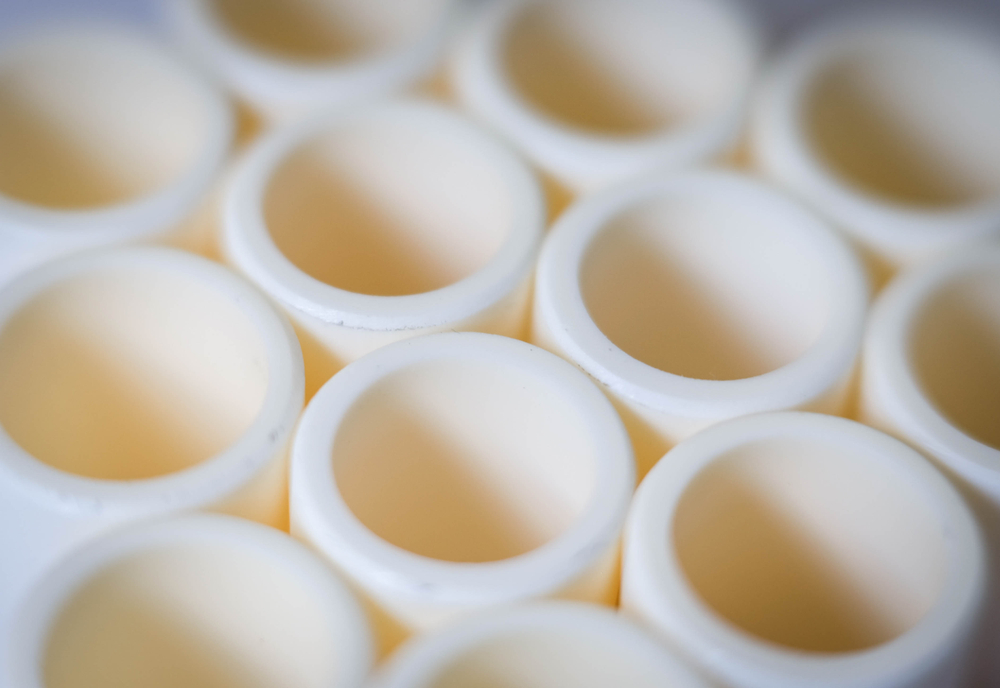|
Insaco's first business in 1947 was fabricating sapphire parts (i.e. phonograph needles). This work was all accomplished through a diamond grinding process, which is extremely accurate, though painstaking, and the only practical method to machine complex shapes using this crystal material. Once we established our expertise working with extremely hard, yet fragile materials we began accepting work fabricating other extremely hard technical ceramic materials such as alumina, zirconia, silicon carbide, among others, as well as glass that included quartz and fused silica. Insaco does not machine metals or plastics simply because they are too soft to be machined effectively with fine diamond wheels.

Image Credit: Shutterstock/WildSnap
Does Insaco Work On Prototype Quantities?
Insaco welcomes small lot or even single piece orders as well as production series. Obviously the single piece prices will be higher because set-up and handling costs can’t be distributed over a larger base. Small quantities may also preclude use of larger, more automated machine tools. But big orders usually start with small orders, and small orders are always welcome.
How Can I Get Ceramic Pieces For Less Cost?
Most ceramics can be formed (cast, molded, pressed) in a soft state with features in place. This is not unlike forming a red brick as used in building a house but before it gets kiln fired. Once fired, the ceramic shrinks considerably which creates distortion and allows tolerances typically of only 2% (or .003” whichever larger). If these tolerances are acceptable for the end use, like a brick for your house, then the cost can be low. If tighter tolerance is required, then additional work like diamond grinding is required. So, careful consideration of tolerances for your application may avoid the need for and expense of post-fire grinding.
How Do I Know Which Ceramic To Specify?
Insaco does not produce or sell ceramic materials themselves. For this reason, we can offer advice without bias. Alumina is the most common technical ceramic and hence most readily available and usually lowest cost. Properties of alumina are exceptional in many ways when compared to conventional materials like steel. If the use conditions exceed these properties, other technical ceramics such as Silicon Carbide or Zirconia may be better choices even though less available or more difficult to fabricate.
How Does Crystal Orientation Affect Sapphire Properties?
Sapphire is an anisotropic, rhombohedral crystal, and therefore non-uniformly dimensioned. Anisotropic materials exhibit some properties such as thermal expansion uniquely to orientation. For most applications this is unimportant, however should be considered. Sapphire is “birefringent” which is a refractive feature that offsets wave transmission up to 0.8% at right angles to the optic axis. Birefringence is eliminated along the optic or C-axis. For certain applications, C-axis sapphire should therefore be specified to avoid birefringence concerns.
Can Sapphire Be Cast Or Molded To Final Shape?
No. Sapphire cannot be molded like some other materials. Industrial sapphire is created by melting aluminum oxide (Al2O3) at 2040°C and then encouraging crystal growth with a seed and careful control of the environment. Growers have developed several unique methods for growth, with varying levels of resultant quality, size, and cost. The EFG or Stephanov methods allow the directed growth of shapes like ribbon, or even tubes, however there are many limitations to what can be done. The Czochralski, HEM, or Kiropolous methods allow the highest optical quality sapphire, but the result is a rod like “blob” of crystal called a boule, that must be entirely machined into useable shapes and sizes.
Does Insaco Sell Ceramic (Or Glass Or Sapphire) In Bulk?
No, we are a machining company. We don’t produce any materials, nor do we stock for resale. However, we do buy materials from which to fabricate parts finished to customer specification.
What Tolerances Can Insaco Hold?
The nature of diamond grinding on ultra hard materials translates into tight tolerances being routinely achieved. The actual limits to the attained precision depend on variables like the machine tool used, the general shape and size of the part, and the sequence of operations needed to complete the task. Although our shop standard for machining is +/-0.004”, we generally halve this on the first pass of operations. Secondary operations can further narrow this to +/-0.0001”. Our flat lapping operations can best be recorded in millionths of an inch. We welcome discussions about desired tolerances and often provide constructive advice regarding practical limitations and cost considerations.
What Is The Smallest Size Insaco Can Fabricate?
Insaco is typically capable of generating tightly toleranced features to .001”, or even .0001”, and in some cases even tighter. However, since our work is done by diamond grinding, we do have to have a means to fixture the piece, also to clean and handle. So extremely tiny pieces pose special constraints.
|